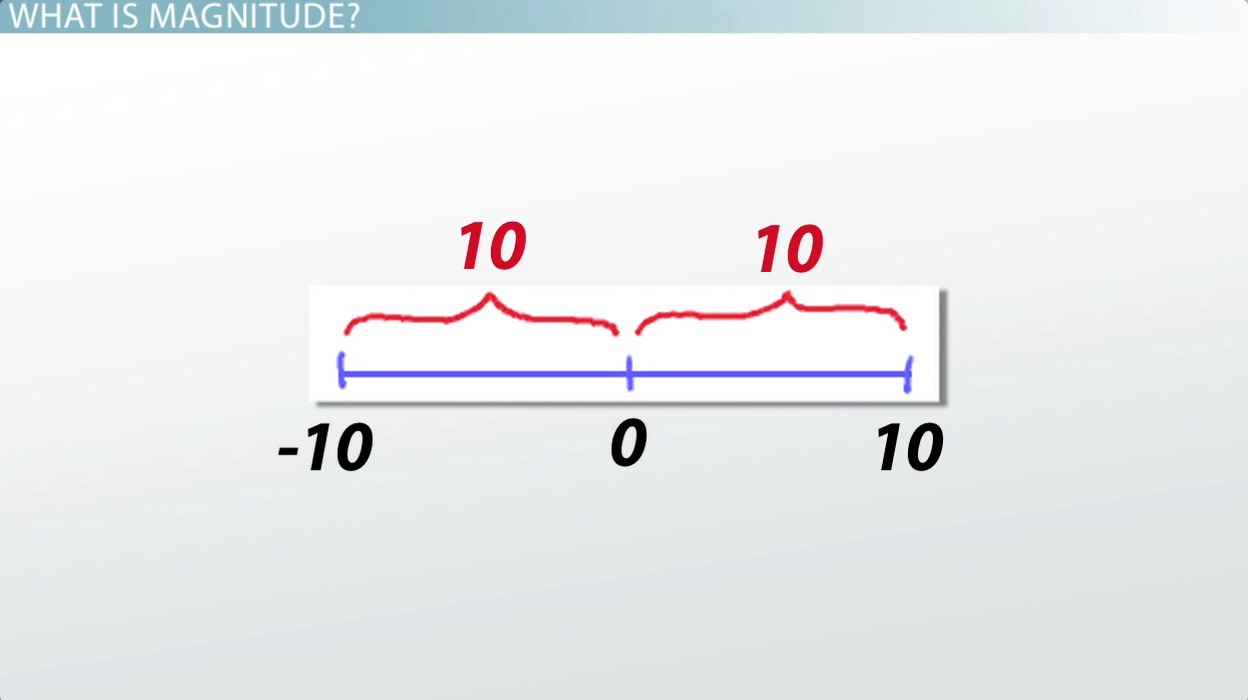
All of the possibilities are listed in the following table. It is defined as the product of the force F and the moment arm d.
For example the magnitude of.
Is magnitude always positive. By definition magnitude of any vector quantity ia positive. Magnitude of distance magnitude of velocity magnitude of force all are positive. Its not necessarily always positive.
However a vector with a negative magnitude is equivalent to a positive vector in the opposite direction. Starting early can help you score better. Avail 25 off on study pack.
When you are dealing with magnitude and absolute value negative signs get dropped. Negative numbers are always positive in the world of magnitude and absolute value. For example the magnitude of.
A vector is a quantity described by a magnitude and a direction. The magnitude is always ve or zero. A -ve sign in front of a vector indicates the same magnitude but in the opposite direction.
The - sign is part of the direction rather than the magnitude. Like all vectors a resultant vector is neither ve or -ve. Simpler still magnitude is the size or length always positive or zero of a vector independent of the vector direction.
Displacement in Newtonian physics is a vector and has two elements a signed length positive negative or zero and a direction. Jun 11 2008 12. It has a direction.
So either it will be a positive vector or negative one. So coming to your point Electric field as I told can be negative or positive but when we consider magnitude of we only consider the number not the sign. Hope you got the answer.
Justify your answer in your own words. Magnitude is always positive even if the direction is negative. For the sum of two vectors to equal zero the sum of their respective components must equal zero.
A ax ay. B bx by. Ax ay bx by 0x 0y.
In mathematics magnitude or size of a mathematical object is a property which determines whether the object is larger or smaller than other objects of the same kind. More formally an objects magnitude is the displayed result of an ordering or rankingof the class of objects to which it belongs. In physics Magnitude can be defined as quantity or distance.
It represents the magnitude and direction of the force another positive charge would experience when placed in that field. In this context you can probably see why the. A vector has both a magnitude a length and a direction.
The magnitude of the vector is always positive regardless of which way the vector points just like how an objects length is always positive regardless of how you rotate the object. If that explanation satisfies you great. If not keep reading to learn a little more about vectors.
In electrical engineering and control theory a Bode plot ˈ b oʊ d i is a graph of the frequency response of a system. It is usually a combination of a Bode magnitude plot expressing the magnitude usually in decibels of the frequency response and a Bode phase plot expressing the phase shift. As originally conceived by Hendrik Wade Bode in the 1930s the plot is an asymptotic.
The magnitude of the moment of a force acting about a point or axis is directly proportinoal to the distance of the force from the point or axis. It is defined as the product of the force F and the moment arm d. The moment arm or lever arm is the perpendicular distance between the line of action of the force and the center of moments.
D o is always positive d i is positive for a real image which is of course in front of a mirror or behind a lens. F is positive for a converging lens or mirror. All of the possibilities are listed in the following table.
I think this is an unnecessarily complicated way of summarizing the different cases. But some students prefer to have it. No The sign in a vector indicates its direction but the magnitude is always positive or zero.
In this text the Greek letter Δ delta always means change in whatever quantity follows it. The SI unit for displacement is the meter m. Displacement has a direction as well as a magnitude.
When you start a problem assign which direction will be positive.
